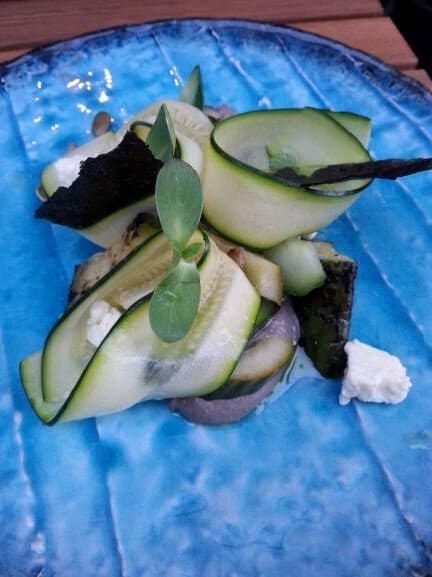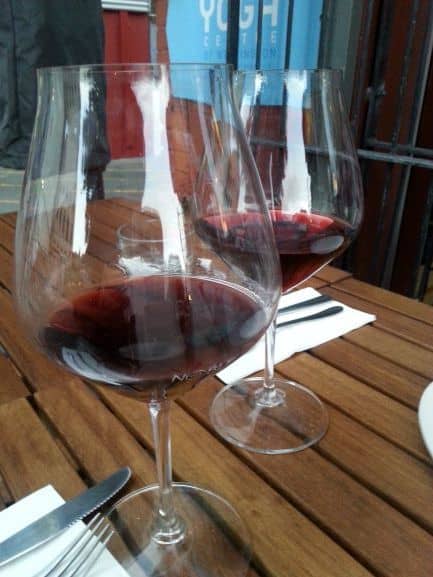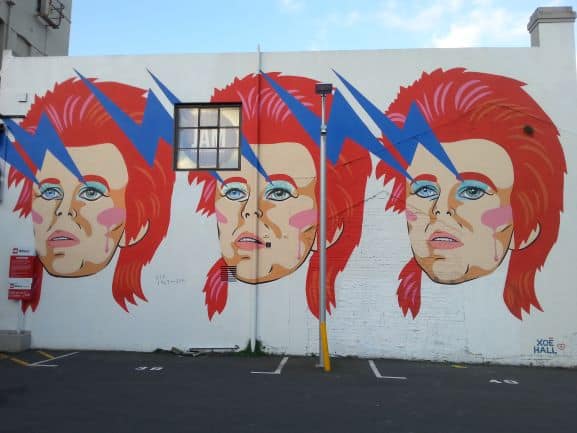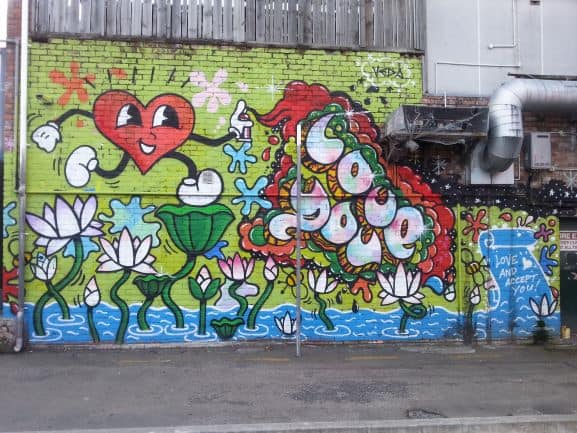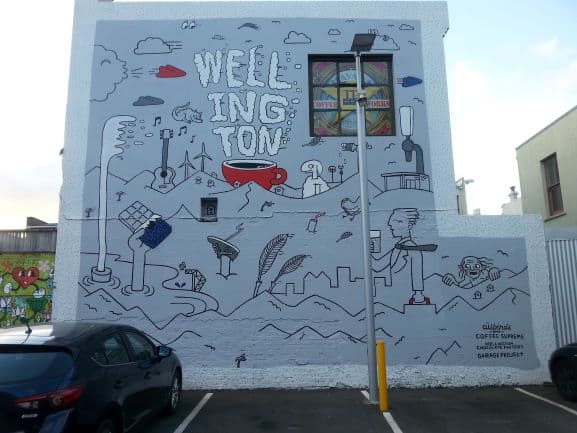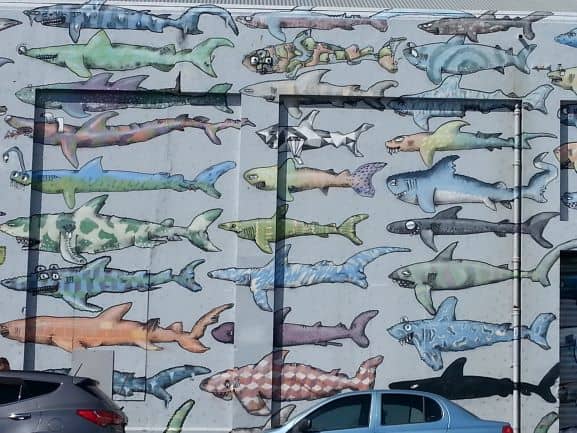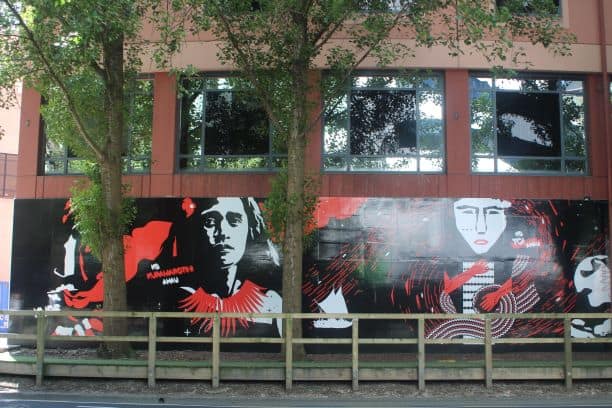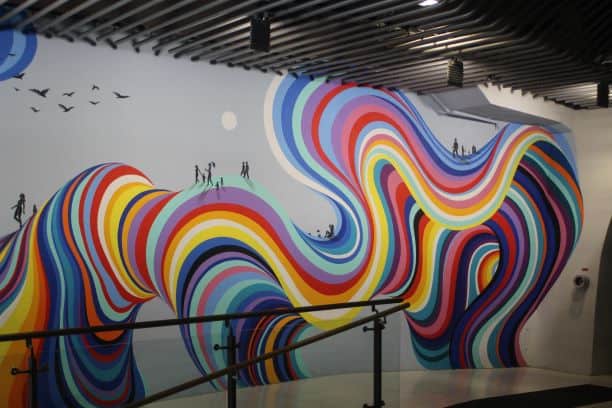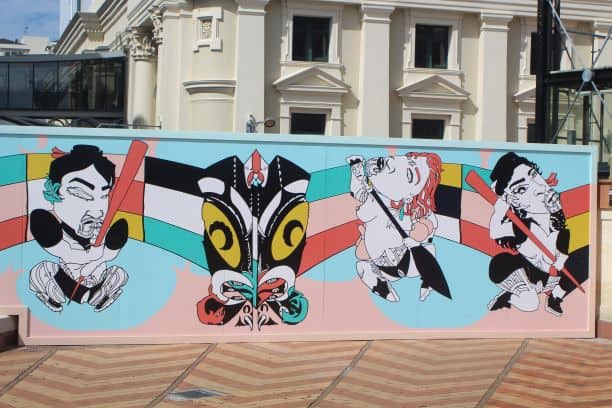Hāngi, Malaysian Street Food, and Rebel Women
Wellington is the bohemian soul of New Zealand with hip cafes, great restaurants, and the best craft beer scene in the country. But, it is also the capital city which has drawn rebels and activists to Wellington to make their voices heard.
A Short History
Māori legend says that Polynesian explorer Kupe discovered Wellington about 1,000 years ago. Te Whanganui-a-Tara (the area now called Wellington) was named for the great chief Tara whose people first settled the area.
A group of Māori chiefs signed an agreement selling the land to a British company, The New Zealand Company, in 1839. A detailed eye witness account of the sale and reactions of the Māori people can be found here with more detail about the specifics of the deal, including the land reverting to the Crown of England after the dissolution of the company, here. At the time of signing the agreement, one chief said “What will you say when many, many white men come here and drive you all away into the mountains?”.
In 1855 an 8.2 magnitude earthquake struck the region, (Wellington lies on several fault lines) struck the region, destroying much of the fledgling town. Ten years later, Wellington had rebuilt and was named the capital of New Zealand.
New Zealand fought with the Allies against the Axis powers during WWII. Almost 250,000 people (nearly 20% of the total population of NZ) served overseas and in the Home Guard during the war. U.S. Marines used New Zealand as a training ground and prep area during the war. 40,000 marines were stationed on the island, many of them in and around Wellington. Although many New Zealanders welcomed the Americans as a protective force (especially after the bombing of Darwin in nearby Australia), tensions arose between the Yanks and Kiwis, especially regarding some Marines’ racist behavior toward Māori soldiers. This resulted in several skirmishes including The Battle of Manners Street riot in 1943.
Like all over the world, Beatlemania ripped through New Zealand in 1964. The Fab Four did a short tour of NZ during the summer, playing two shows in Wellington at the end of June. The shows were not deemed successful because of a poor sound system with John Lennon storming off in anger after the first show because of the situation. Screaming Beatle fans, of course, didn’t care. Amazing archival audio here and here.
In the 70’s, many of Wellington’s gorgeous Victorian buildings were torn down due to earthquake threats. In their place, glass high rises were constructed.
At the turn of the century Hobbit-mania swept Wellington as local hero Peter Jackson filmed and directed the Lord of the Rings trilogy in New Zealand with many scenes filmed near the director’s hometown.
Foodie Wellington
Pāua
Pāua is a Māori word for a kind of mollusk, a sea snail, that is valued for both its shell and meat. The pāua shell is unique because when it is polished the shells have take on a purple, green, and blue iridescence that seems magical. The polished shells are used to make all kinds of jewelry and are especially popular in Māori carvings where the polished pāua shell is used to represent an eye.
The pāua mollusk itself is also harvested for food. Traditionally, pāua were hunted by divers (only free divers are allowed to take pāua, no scuba divers) and their catch is tightly regulated to preserve the species. Those caught breaking the catch limit or size requirements for fishing can be arrested and fined heavily as one pair of poachers found out recently.
Pāua farms have also become quite common and they supply restaurants with pāua as well as growing the mollusks for pearl harvest.
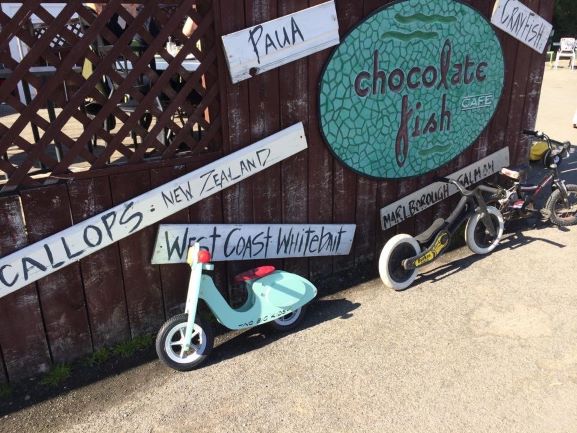
Pāua is often served as a fritter, much like the clam cakes you can get at seaside shacks all over New England. Chocolate Fish Cafe makes what they call a Pāua Patty. The cafe is right on the water at Evans Bay, making it a great spot to hang.
Or, for a more upscale take on pāua, there’s Logan Brown, consistently ranked as one of Wellington’s top restaurants. One of their appetizers is a pāua ravioli. Logan Brown is decidedly a splurge (a steak can go for $75NZ and the pāua ravioli is $14NZ for two ravioli) but the quality of the food makes it worth it.
What I like to do at places like Logan Brown is order a few appetizers or side dishes so I can get a taste of several things. That also allows room for dessert and LB has a hazelnut beignet with cardamom ice cream; omg roll me back to the hotel.
Hāngi
Hāngi is a traditional Māori method of cooking food where a pit is dug and rocks are placed in the pit. Then, a fire is built which heats the rocks. Raw meat and vegetables are placed in the pit and covered for several hours, during which time the hot rocks cook the food. Traditional hāngi covered the meat and vegetables with leaves or cloth, but today most hāngi is cooked in aluminum foil or wire baskets.
The underground cooking method infuses the food with a smokey, earthy flavor that you can’t get from cooking in a conventional oven.
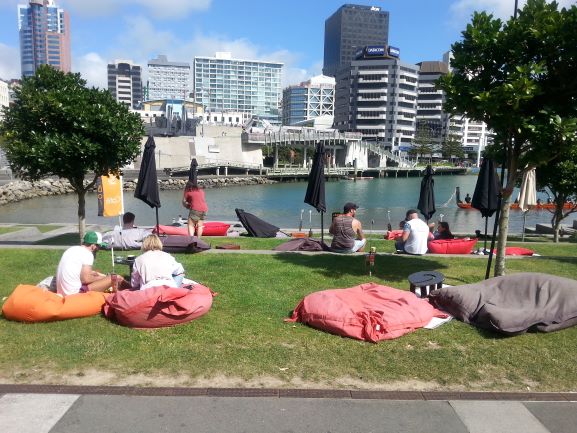
Karaka Cafe is right on the waterfront in Wellington. Occasionally, they build a hāngi fire pit, so check their website for the next one. But, even if they don’t have the hāngi going, Karaka Cafe has a lot of authentic Māori food on the menu.
For a spectacular, upscale Māori meal, Haikia, owned by chef Monique Fiso, is the spot. Hāngi is often on the menu, but so is a plethora of local dishes, including fresh seafood.
Malaysian Street Food
The first Malaysian people came to New Zealand just over 100 years ago, but Malay immigration increased after racial riots in 1969 resulted in the oppression of the minority population of ethnic Chinese Malaysians.
Today, only about 16,000 people in New Zealand were born in Malaysia, but years of immigration means that many more have Malaysian ancestry.
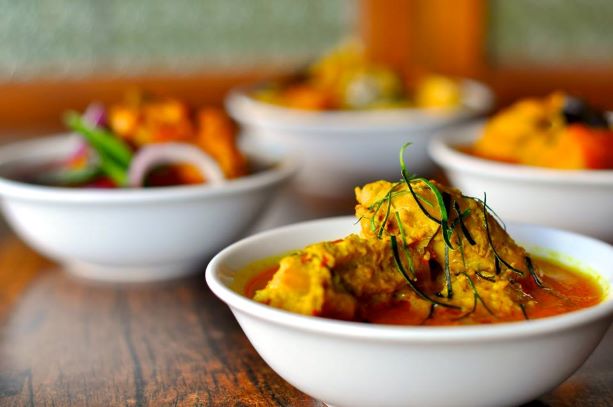
In Wellington, there is an embarrassment of riches when it comes to Malaysian restaurants. And, since the food is cheap and tasty, it is also very popular.
Both KK Malaysian and Little Penang are good choices. It seems every Malaysian restaurant is proud of their laksa (a coconut curry soup), and KK makes a great one, importing their curry powder and coconut milk for authenticity.
Meanwhile, co-owner and chef Tee Phee of Little Penang takes it step further, importing spices from Malaysia and mixing them herself into her own secret recipe.

But, my favorite Malaysian restaurant in the city is Aunty Mena Vegetarian Cafe. As a lot of vegetarian places do, Aunty Mena makes mock meat dishes like faux “chicken” satay on skewers. Their menu is huge so it’s tough to decide, but let me make this suggestion, start with laksa, it’s delicious.
Also, there’s a couple long tables in the back. I have seen this setup at many restaurants in New Zealand and I really like it. As a traveler, I like meeting new people, especially locals when I’m visiting a new town. Sitting at one of these long tables invites conversation with others. I’ve met so many interesting people this way!
Tapas
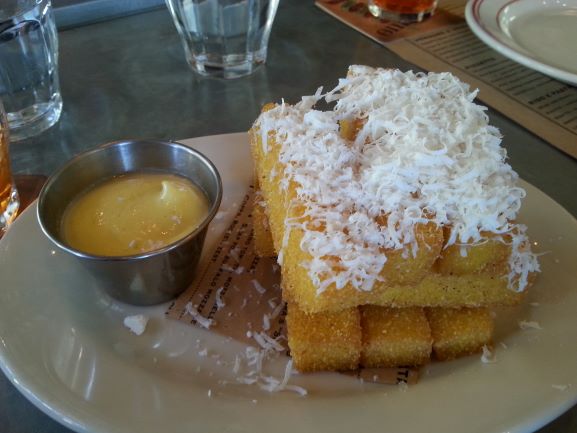
Every city has a selection of tapas these days. When I was last in Italy, it seemed there was a new tapas place sprouting up on every corner. So, tapas outside of Spain is no longer unique.
But, I mention tapas in Wellington simply because we wandered into two different tapas places and both were fun and tasty.
Ombra does what they call Venetian tapas or bacari. I love the polenta chips (fries) but they have a menu full of excellent dishes. And during happy hour you can get an Aperol spritz for just $8NZ (less than $5US). And, any place that has four different kinds of grappa on their menu is all right by me.
The other spot we enjoyed, Basque, has sadly closed recently.
Drinking in Wellington
Cuba Street and Coffee
Cuba Street is the bohemian soul of Wellington. Unlike some other so-called hipster neighborhoods in other cities, Cuba Street delivers the goods. Restaurants, bars, and shops line Cuba Street and its nearby sidestreets.
You could have a memorable meal for breakfast, lunch, and dinner as well as drinks for happy hour and a night cap every day for a month and still have more to explore on Cuba Street. The famous Logan Brown is on Cuba Street, and so is Aunty Mena and Ombra.
But, one of the real draws to Cuba Street is the coffee scene. Wellington is serious about their coffee and most cafes will make you a decent cup, but Fidel’s and Midnight Espresso stand out. Or, a couple blocks off Cuba Street is the Flight Coffee Hangar for serious java nerds. Flight Coffee roasts beans they personally source from coffee farms. Beans come from some lesser-known coffee locales like Myanmar and Rwanda as well as better-known coffee regions like Columbia.
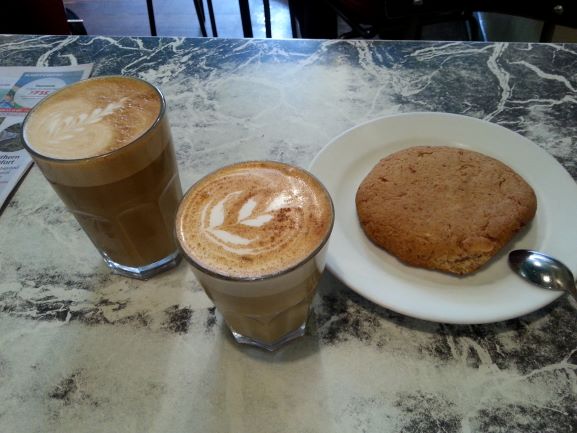
When in New Zealand I think it is essential to order a “flat white.” Similar to a latte, this drink features espresso topped with milk. But, instead of a thick layer foamed milk, the milk in a flat white is a thin layer of microfoam. And, the nice thing is that almost every cafe offers soy, almond, and coconut milk as an alternative to cow’s milk.
Just like the dispute over who invented the pavlova (detailed in my post about Auckland), the origin of the flat white is claimed by both New Zealand and Australia. A bar in Sydney says they created the drink in the mid-80’s with coffee houses in Auckland and Wellington making the same claim. Today, even Starbucks in the U.S. has a flat white, but there’s nothing like getting one on funky Cuba Street in Wellington.
Wellington Wine Region and Noble Rot
Just outside Wellington is the Wairarapa wine region. Known for the difficult to grow Pinot Noir, Wairarapa also produces some nice Chardonnay and Pinot Gris.
Several small towns in Wairarapa have nice wineries to visit (in New Zealand a tasting room is called a Cellar Door) but Martinborough gives you the most bang for your buck as it is both beautiful and has a lot of wineries to choose from.
Driving to Martinborough is an option, but then you have to have a designated driver. I prefer to take to train/bus to Martinborough and then rent a bike. Take the WRL train from Wellington to Featherston Station, then at the Featherston Station Bus Stop take bus 200 to Kitchener Street in Martinborough. The bus stop is on the same block as the Green Jersey Cycle Tours and Bicycle Hire. Here you can book a bicycle wine tour (the terrain in Martinborough is flat, making it perfect for cycling) or rent a bike for the day. If you go the DIY route, check out this map of places to go.
If that sounds like too much exercise, but you still want to experience Wairarapa wines, Noble Rot is the choice. They have a massive wine list with hundreds of bottles as well as a fine selection of wines by the glass. Of course, many from Wairarapa as well as other New Zealand viticultural regions are on offer. Although some of the food is a bit pricey (but very well prepared) generous 150ml (about 6 ounce) pours of wine are mostly in the sub $10US range, quite a deal!
Cocktails at a Speakeasy
Most travel guidebooks will tell you to ask a cab driver or a hotel concierge for restaurant and bar recommendations. I’m decidedly against this strategy for two reasons.
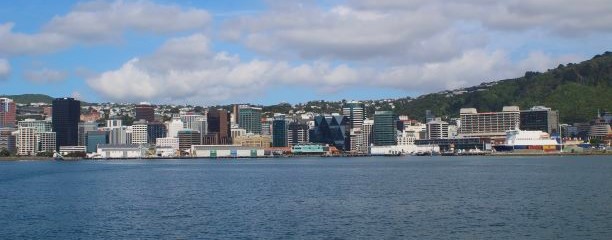
First, these folks are in the tourist business so they’re going to send you to the tourist spots. I can find tourist spots online, when I’m asking for a recommendation, I’m looking for a local spot.
Second, cab driver and concierge recommendations are often based on stereotypes. Let me explain. If you’re young and dressed fashionably, you’ll be pointed in one direction while if you are older and dressed conservatively, you’ll be pointed in another, even though the young person might want a quiet, upscale place while the older person could want a loud, party place.
That’s why I ask bartenders for restaurant and bar recommendations. The reason is because bartenders frequently hop jobs, so they have experience with lots of places. And, their friends work in bars, so they get the inside scoop on these places, too. Finally, bartenders often go out a lot to meet friends or unwind, so they’ve been everywhere.
Waiters and waitresses can also good people to ask, although I’ve had better luck with bartenders.
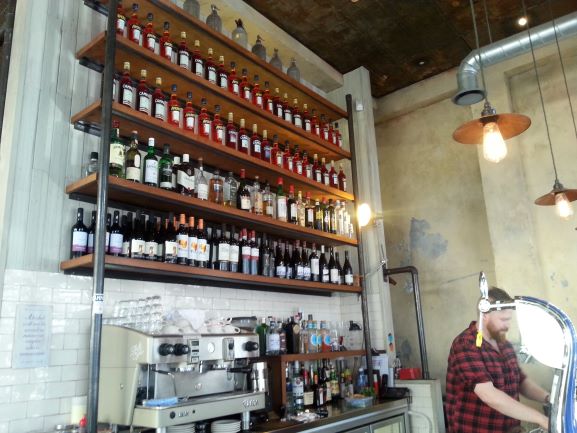
In Wellington, this strategy was put to the test. That’s because New Zealand brings over thousands and thousands of foreign workers on temporary visas each year to work in the service industry. We met people from the U.S., Australia, Somalia, Iraq, Italy, Chile, Malaysia, India, Ireland, and Zimbabwe who were working in NZ. And that was just the people we asked, I’m sure there were lots of other countries represented.
Since these folks are in NZ for a short time, they often aren’t familiar with the city yet. However, we lucked out when we visited Ombra. The bartender was a nice gentleman from Ireland (who served us a great Aperol spritz) and he recommended a place called Night Flower. Night Flower doesn’t have a website (though they are on Instagram), isn’t mentioned in any guidebook or Yelp and have a handful of huffy reviews on TripAdvisor. A real find.

Night Flower’s walls are painted black, the couches are draped in red velvet and a hipster bartender with a handlebar mustache makes you anything you want. And you best know what you want, because there’s no menu and no prices.
Night Flower makes their own tonic so the G&T comes highly recommended. I was expecting a huge bill at the end of the night, but the drinks ended up being about $8US each. Quite reasonable, but I’m sure if you ordered some fancy drink it would be more. One last note about Night Flower, the music set the mood perfectly. A mix of 50’s blues and jazz had me wanting to melt into the velvet couch.
Then there’s Hanging Ditch. With their liquor bottles suspended from the ceiling by bungee cords, you’re in for a treat when the bartenders make your drink. Truly original.
Craft Beer
Despite the nearby Wairarapa wine region and the nice cocktail bars in town, Wellington is, at its heart, a beer city. And, Welly is filled with great craft beer establishments.
Rogue and Vagabond comes in at the top of the list for getting a great beer in Welly. While is seems that every bar and brewery these days is trying to outdo eachother with how hoppy and bitter a pint they can make, R&V offers a wide range of beers and ales for every palette. There’s always at least one nitro on tap as well.

One quick word about beers in New Zealand. Most bars are good about labeling the brewer, ABV, and beer style. I noticed APA listed as a beer style, so I asked a bartender (note that this was NOT at Rogue and Vagabond, but another unnamed bar) what APA stood for. I was told dismissively, as if I was stupid, that it stood for American Pale Ale. Makes sense, but in America we don’t call it American Pale Ale, just like they don’t call it Canadian Bacon in Canada. My response was met with stony silence.
There’s a definite punk rock vibe to the Rogue and Vagabond; the staff has lots of tats and other ornamentation. But, don’t fall prey to stereotypes. Everyone I spoke to who worked there was friendly and passionate about good beer.
The bar is adjacent to a small park which R&V have thoughtfully filled with beanbag chairs for relaxing with your friends. Dogs and children fill the park with a spirited energy.
R&V also serves some pretty good pub food. I have to take a moment to give them props for the creative names they give their pizza. Message to you Rudi, Bitches Brew, Swordfish Trombones, Meat is Murder, and Armageddon Time are all on the menu! If you know what the meanings behind these names, you’ll feel right at home at Rogue and Vagabond.
Dive Bar is not a term that is widely known or used in New Zealand. And Free Bar is not a common term in the United States. A Free Bar is one that is not tied to a specific brewery or distributor so it can serve any beers it chooses.
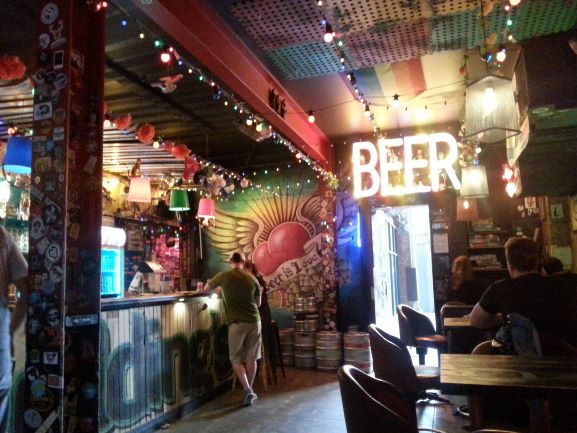
Goldings Free Dive is both a dive bar and a free bar. Peeking inside, you might not expect much with the plastic buckets used as lampshades and empty kegs piled near the bar. There’s also lots of sci-fi toys, with a heavy emphasis on Star Wars, hanging from the ceiling and attached to the walls.

But, their beer selections are outstanding and ever changing. Extra points for having a no smoking outdoor seating area (a seeming rarity in New Zealand).
And, they offer some of the best pizza in Wellington. Pizza Pomodoro is right across the alley. They make an excellent Neapolitan style pizza and why not? The pizza chef, Massimo Tolve, is from Naples. Order the margherita, and someone from Goldings will run the order across the alley and a little while later, you’ve got a superb pie in front of you!
You might not have thought of a Japanese craft beer bar, or a cult beer bar, as they call Hashigo Zake. They offer a revolving array of unusual and rare taps and bottles from around the world. There’s also a selection of bar snacks that are certainly different from most bars. How about octopus dumplings? Is that left of center enough for you?
The Morning After
And, if the night goes a little too late and long, grab a bagel and coffee at Best Ugly Bagels for a breakfast hangover cure.
Their Montreal-style bagels are different than the New York-style bagels we’re used to in the States. First, the dough is hand rolled and simmered in honey water, then baked in a wood-fired oven. This gives the bagel and crispier crust and airier center than the better-known NY counterpart.
BUB offers tons of toppings and spreads for their bagels like PB&J or Marmite (very popular all over NZ), but my favorite is the T.A.B.; tomato, avocado, and basil with a drizzle of lemon fennel olive oil. It must be popular because Best Ugly Bagels has trays of fresh basil plants waiting for their leaves to be plucked and placed on the T.A.B.
Things to Do
Walking Tour
One of the best ways to get a quick overview of a city is to take a walking tour. Most cities have at least one good one.
I like to take walking tours on the first day I arrive in a city. It helps to burn off the jet lag and lets you see some of the major sites in one morning (or afternoon).

Walk Wellington is in its 20th year of operating tours. Our guide took us over the City to Sea Bridge which is filled with interesting artwork, along the waterfront, to the Old Bank Arcade Musical Clock, to the government buildings, and to the library (which is really the national archive). We ended the tour at Old St. Paul’s Church.
Stringing together all these major sites ourselves would’ve taken an entire day or more, but the walking tour did it in a single morning with lots of interesting commentary and history.
Remember to tip your guide. They are often volunteers.
Cable Car and Botanical Garden
My number one thing to do in Wellington is to take the cable car up a steep hill to Kelburn and then walk back down to Wellington through the botanical garden.
In the late 1800’s, Wellington was growing fast and the suburb of Kelburn, located atop a hill overlooking the city gained many residents. In response, the city built a cable car (actually a funicular) connecting downtown with Kelburn.
The track is about 2,000 feet long a rises about 400 feet in altitude. The trip is short (about 5 minutes) and the cars are usually crowded with tourists, workers, and locals. A round trip ticket is $9NZ, but I buy a one way ticket ($5NZ) because we’ll be walking back down.

The views where the car stops at the top of the hill are spectacular and a small cafe has taken advantage of that fact by placing several tables outside where you can overlook the city. This is a good place to grab a snack or light meal.
And, if you’re walking back down, get some water at the cafe if you didn’t bring any with you. While it might not get unbearably hot in New Zealand in the summer, there are a few things to keep in mind.
First, the sun is strong. I’d heard Kiwis say this, but didn’t understand what they meant until I was outside for an afternoon without a hat or sunblock. Get both. Even if the temps are in the 60’s or 70’s, the sun can burn you bad.
Second, it gets very humid in New Zealand, making an 80 degree day seem oppressive. If the wind’s not blowing, you will sweat.
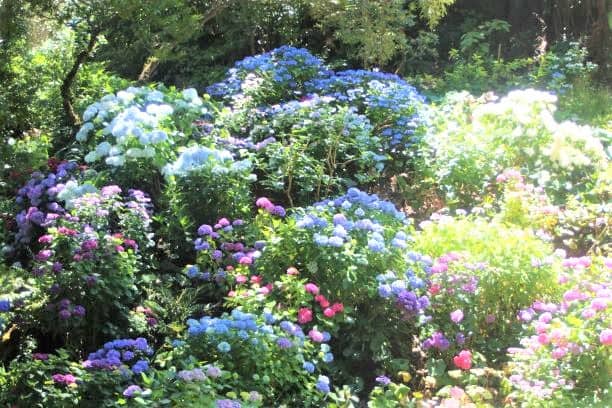
So now that we’re prepared with water, a hat, and sunscreen, let’s make our way back to Welly. The Wellington Botanic Garden winds from the top of the hill back to the city. The WBG covers over 60 acres and is laid out with different gardens including a rose garden, a hydrangea garden, seasonal gardens, and many, many more. So, even though it only takes five minutes to get to the top of the hill on the Wellington Cable Car, you can expect to spend at least a couple hours winding your way back down.
Admission to the WBG is free, but there are occasional guided tours, some of which have a nominal fee.
Rebel Women
New Zealand has an extraordinary history of strong women standing up to (and defeating) the patriarchy.
The most famous NZ woman was probably Kate Sheppard. Born in Liverpool, Kate moved to New Zealand with her family when she was 20.
Ms. Sheppard, a gifted writer and public speaker, was able to organize a nationwide petition drive that eventually gained over 30.000 signatures in 1893. The petition was presented to the NZ legislature where it passed and was reluctantly signed by the Governor of New Zealand, giving women in New Zealand the first voting rights in the modern world. It would not be until decades later that women’s right to vote was obtained in the U.S. and U.K.

Today, Kate Sheppard is celebrated as a groundbreaking hero in equality and civil rights. Her image is on the Kiwi $10 note and there are paintings and sculptures of her and the cause she championed all over the country. One of my favorite images of Kate Sheppard is near the government buildings in Wellington. There, the street crosswalk “walk now” figures are a silhouette of Kate in her Victorian clothing.

The New Zealand National Library in Wellington displays a part of the original petition (it isn’t in great shape) and there is a nice statue of Ms. Sheppard in lobby. The library also serves as a national archive and workers are busy creating a database of all 31,000+ signers of the women’s suffrage petition. Their work may never be completed since several portions of the petition have been damaged. But, that doesn’t stop Kiwis from flocking here to look up names and see if perhaps one of their ancestors was an original suffragette.
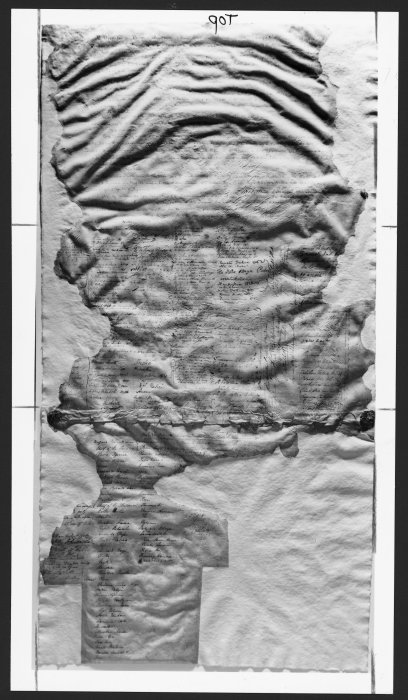
Two other extraordinarily important documents are on display at the National Library. One is the He Whakaputanga, often called the Māori Declaration of Independence. The He Whakaputanga not only establishes New Zealand as belonging to the Māori but it also shows that the various tribes have united under one banner.
The other important document, signed five years later in 1840, is the Treaty of Waitangi. This treaty outlines an agreement between the new European arrivals and the new nation of Māori. Many Māori were anxious to sign the treaty with the British as they sided with the Brits against the French who were also trying to colonize NZ. The treaty was signed by 540 Māori leaders, but the two treaties, one in English and the other in Māori, differed on the important point of sovereignty. The question of the sovereignty of the Māori people is still debated today.
Street Art
Wellington has a vibrant street art scene which has the support of the city government. Many interesting, thought provoking, and funny murals are concentrated around Cuba Street, but there is excellent artwork to be found all over the city. The Wellington City Council has done a good job of maintaining a comprehensive list of street art works with the artists who created them.
Writer’s Sculptures
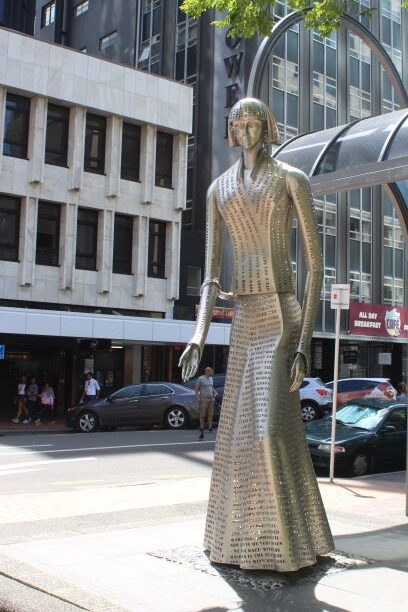
Along Wellington’s beautiful waterfront is the Wellington Writers Walk, 23 sculptures made of concrete with quotations in raised text from famous Kiwi writers about Wellington.
One of Wellington’s greatest writers, Katherine Mansfield, has a sculpture on the waterfront with a quote from her short story “The Wind Blows.”
Ms. Mansfield was born in Wellington to a wealthy family but was educated in England. She returned briefly to NZ, but was disillusioned with the racist treatment of the Māori people. She moved permanently to Europe at age 20 where her bohemian and bi-sexual lifestyle was deemed scandalous.
Katherine Mansfield contracted TB and died at 35 but her childhood home in Wellington is still a pilgrimage site for the many people who love her writing. There is also a stainless steel statue of KM, engraved with phrases from her writing, in Midland Park on Lambton Quay.
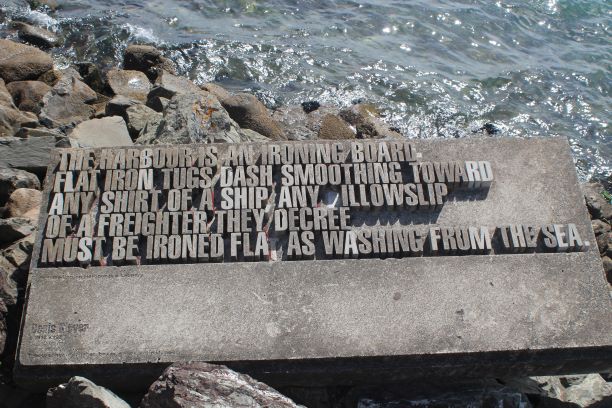
While there is a map the Wellington Writers Walk available at bookstores and shops, many of the pieces are in inconspicuous locations. This makes part of the fun stumbling across them and then pondering their meaning. Another great example of what makes Welly so cool in an understated and humble way.
Te Papa
In my life I’ve gone through phases regarding how I feel about museums. Decades ago I felt like I had to see every museum when I visited a city. Later, I swung far in the other direction, rejecting museum visits for spending more time in cafes and wandering neighborhoods to be with the local people. For instance, I’ve been to Paris, but never visited the Louvre, although I can detail the menu at several of my favorite Parisian cafes and grocery stores.
Today, while I feel that neither approach is wrong or right, I take a more middle ground. That means that I don’t feel obligated to visit a museum, even if it is a major tourist attraction. Instead, I visit museums that interest me, and am especially on the lookout for oddball and quirky museums or museums that expand my cultural understanding of a place.

The Te Papa (Our Place in Māori) Museum does a great job of the later. The museum displays many extraordinary Māori artifacts including Pouwhenua (carved wooden posts), Waka (Māori canoes), and a whare whakairo (a Māori meeting house).
Te Papa is also the New Zealand National Art Gallery. The museum came under fire for its emphasis on European art but has subsequently displayed large exhibits featuring Pacific Islander art, including many contemporary pieces.
The museum has free admission (although you may have to pay to see special exhibits), and is massive with six levels. You could easily spend an entire day here, but if you don’t want to see everything (which would be impossible, anyway) expect to spend at least two hours at Te Papa.
Matiu/Somes Island

Matiu/Somes Island is and island in Wellington Harbour. The island is owned by the local iwi tribe and administered by the Department of Conservation as a scientific reserve. As such, visitors are welcome and can access the island by a short ferry ride from downtown Wellington, but must abide by the island’s strict rules. These include checking bags and clothing for any invasive species (plant and animal) or predators (rats were eradicated from the island in the 80’s).
Hiking around the small island (it’s only 62 acres) is a fun way to spend an afternoon. But, know that there are no facilities on the island except for a single bathroom near the boat dock. Anything you bring with you must be taken out as well.
Matiu/Somes Island is known for its wildlife, but you’re unlikely to see the most famous residents, a colony of blue penguins. These little guys usually are out swimming and feeding during the day and only come ashore at night. But, missing out on the penguins doesn’t diminish the natural beauty you’ll see while exploring Matiu/Somes.
The island also has a fascinating history. A lighthouse was built in 1866, shortly after European arrival in Wellington, to help guide boats into the harbour. It was later rebuilt in 1900 and still stands on a perch at Matiu/Somes today. Hiking around the island from the boat landing, the lighthouse is about halfway around the island and is a great lookout point as well as a spot for selfie.

During WWI so-called “enemy aliens” were held in what were called quarantine barracks on the island, which is a nice way of saying that hundreds of German nationals, many of whom had families and established businesses in NZ, were held prisoner. Some of the barracks where these people were held are still standing as is the “hospital” that cared for sick prisoners which is now the Department of Conservation field centre.
After the bombing of Pearl Harbor, and later the bombing of Darwin in Australia, New Zealand was on high alert for a possible attack by the Imperial Japanese Navy and Air Force. Anti-aircraft guns were mounted on the top of Matiu/Somes, but never had to be called into action. The command post and gun encampments still stand at the top of the hill on the island.
Wildlife
New Zealand has some of the most abundant and interesting wildlife in the world. Because of its isolation and lack of human settlement for much of its history, many unusual specials evolved and flourished in New Zealand.
After the Māori arrival on New Zealand, several species of flightless Moa were hunted to extinction. Following European colonization, dozens of others species became extinct. In fact, since European arrival, over half of all bird species in New Zealand are now extinct.
The kiwi, a flightless bird, has become the national symbol of NZ. It is so iconic that New Zealanders are often referred to as Kiwis. Unfortunately, after European settlement, stoats, a kind of weasel, and dogs began preying on kiwis which led them to be endangered. Conservation methods have brought populations back and they are no longer considered endangered, but instead, vulnerable.
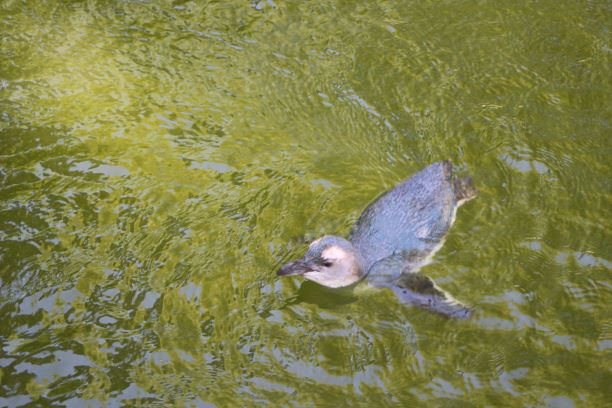
Zealandia is a 500 acre urban ecosanctuary committed to New Zealand’s wildlife. A fence surrounding the sanctuary keeps introduced mammals from getting inside. All kinds of native birds, reptiles, frogs, and plants, many of which you’ll never see anywhere else, are in Zealandia.
Catch a free shuttle bus from the top of the Wellington Cable Car to Zealandia. But, remember, if you want to see the kiwi, they’re nocturnal, so you’ll have to take the night tour, which is a bit pricey at $85NZ for adults and $40NZ for kids.
A less expensive alternative ($25NZ adult/$12NZ child) is to visit the Wellington Zoo, which has a dark kiwi exhibit allowing them to be active during our human daylight hours. The zoo is easily accessible by taking the bus which stops just outside the entrance.
Island Bay
Island Bay is a suburb about 5km south of downtown Wellington. It’s past the mouth of Wellington Harbour so the land is more exposed to the elements, but Island Bay is worth a visit for its peaceful setting and beautiful landscapes.
The City to Sea walkway winds a 12km path from Wellington through several scenic areas before ending at Island Bay. But, be forewarned, even though the walk is only about 7 1/2 miles, it will take 6-7 hours to complete.
A better way to get to Island Bay is by bus (there is also plenty of parking if you have a rental car). The #1 bus goes all the way to the beach, or you can get off before in the little town and check out one of the cute cafes or a catch a movie at the beautiful Art Deco movie house, Empire Cinema and Eatery.

Island Bay has been a home to the ex-pat Italians (and Greeks and Shetlander Island) who fished the waters. In fact, it’s not uncommon the see the Italian flag flying from fishing boats moored offshore.
The highlight of this sleepy little town is walking on the beach or the promenade, enjoying the views, getting some sun, and checking out the quirky beach homes along the shore. But, scuba divers will find it an enjoyable place to explore as well; the HMNZS Wellington was sunk nearby to create an artificial reef in 2005.
Hobbits
The Lord of the Rings Trilogy was filmed in New Zealand from 1999-2000. Unfortunately, most of the sets were dismantled after filming. The exception is Hobbiton, which you can visit and I detailed in my post about Auckland. Hobbiton is a 2.5 hour bus ride from Auckland and it is best to visit from there as the car ride from Wellington is over 6 hours.
Even though the sets are no longer standing, there are still many filming locations from the trilogy that you can visit near Wellington. Backpacker Guide has done an excellent job of outlining the places where you can bring out your inner Bilbo.
Transportation
Wellington International Airport
Major airport with lots of domestic and international departures and arrivals.
Stewart Duff Dr, Rongotai, Wellington 6022, New Zealand
Ground Transport
The 91 bus goes from the downtown Wellington. There’s also plenty of taxis and shuttles. Uber is also available..
Local Transportation
Metlink
Metlink has bus, train, and ferry service in the city. Well laid-out and efficient.
The Snapper Card is a good deal if you plan on riding Metlink more than a couple times.
Uber and taxis are widely available. A rental car is not needed unless you’re planning a roadtrip of significant distance.
Index of Things to Do in Wellington
Walk Wellington
Guided walking tour of some of the major sites in Welly.
Walking Radical Wellington
Self-guided walking tour of Wellington’s activist sites.
Food and Spice Odyssey
Several foodie tours including a cocktail tour
Capital Tastes Walking Tour
Informative and tasty walking tour
Wellington Writers Walk
Self guided walk of 23 sculptures along the waterfront featuring famous Kiwi writers’ musings on the city.
Te Papa Museum
National museum of NZ with an amazing collection of Māori artifacts.
55 Cable Street, Wellington, New Zealand
National Library
Also doubles as the national archive where Kate Sheppard’s suffrage petition as well as the treaty between the Europeans and the Māori are all displayed.
70 Molesworth St, Thorndon, Wellington 6011, New Zealand
Katherine Mansfield Home
Childhood home of acclaimed the acclaimed NZ writer.
25 Tinakori Road, Wellington, New Zealand
Beervana
Huge craft beer festival every August
Wellington on a Plate
Food festival held all over the city every August
Wellington Movie Tours
Lord of the Rings fans will want to see famous movie locations.
Wellington Botanic Garden
Scenic walk from the cable car back down to the city center through the botanic garden
101 Glenmore Street, Kelburn, Wellington 6012, New Zealand
Wellington Cable Car
Scenic ride to the top of Wellington. Walk back down and see the botanic garden.
280 Lambton Quay, Wellington 6011, New Zealand
Old St. Paul’s
Gothic revival church built of local timber with a spectacular interior.
34 Mulgrave St | Thorndon, Wellington 6011, New Zealand
Zealandia
Urban wildlife sanctuary on 556 acres.
53 Waiapu Road, Karori, Wellington 6012, New Zealand
New Zealand Parliament
The national parliament is open to visitors.
1 Museum Street, Pipitea, Wellington 6160, New Zealand
Light House Cinema
Comfy seats, including couches to watch movies. Ticket specials on Tuesdays.
29 Wigan Street, Wellington 6011, New Zealand
Matiu/Somes Island
A scientific research island which is open to public visits. Accessible by ferry.
Green Jersey Cycle Tours and Bike Hire
Bike rental company also does bike tours in Martinborough.
16 Kitchener Street, Martinborough, New Zealand
Index of Food & Drink in Wellington
Karaka Café
Māori cuisine in a cafe on the waterfront.
2 Taranaki Street, Wellington, 6011, New Zealand
Hiakai Restaurant
Māori fine dining.
40 Wallace St, Mount Cook, Wellington 6021, New Zealand
St. Johns Bar and Eatery
Nice spot adjacent to the waterfront with comfy outdoor seating
5 Cable St, Wellington, New Zealand
Rita
Changing menu of dishes using locally sourced ingredients
89 Aro Street, Wellington 6021, New Zealand
Noble Rot
Good food and wine selections. One of Wellington’s best.
6 Swan Lane, Wellington 6011, New Zealand
Pizza Pomodoro
Excellent marinara pizza
13 Leeds Street, Hannahs Warehouse – Te Aro, Wellington 6011, New Zealand
The Ramen Shop
Great noodles and broth in Welly.
191 Riddiford Street, Newtown, Wellington, New Zealand
Hillside Kitchen and Cellar
Unique vegetarian restaurant with creative dishes made from locally sourced and foraged ingredients.
241 Tinakori Road, Wellington, New Zealand
Loretta
One of Welly’s most popular spots. Salads are especially good.
181 Cuba Street, Wellington 6011, New Zealand
Shelly Bay Baker on Leeds Street
Bread, scones, sweets, and the most amazing salted caramel cookies
14 Leeds St, Te Aro, Wellington 6011, New Zealand
Shepherd
Contemporary New Zealand fusion. Always something intriguing on the menu.
1/5 Eva Street, Wellington, New Zealand
Hippopotamus
High-end French restaurant worth a splurge.
In the QT Hotel at 90 Cable St, Te Aro, Wellington 6011, New Zealand
KK Malaysian
Great cheap eats with vegetarian options.
54 Ghuznee Street, Wellington 6011, New Zealand
Little Penang
Spicy, tasty, and affordable Malaysian street food.
40 Dixon St, Te Aro, Wellington 6011, New Zealand
Ombra
Venetian style tapas restaurant and bar
199 Cuba Street, Wellington 6011, New Zealand
Logan Brown
The place to get pāua ravioli
192 Cuba Street, Wellington, New Zealand
Chocolate Fish Cafe
Beautiful spot 15 minutes outside downtown right on the water at Evans Bay. Pāua Patty is a specialty.
100 Shelly Bay Rd, Wellington, New Zealand
Aunty Mena Vegetarian Café
Inexpensive Malaysian vegetarian food
167 Cuba Street, Wellington 6011, New Zealand
Fidel’s
Excellent coffee.
234 Cuba Street, Wellington, New Zealand
Flight Coffee Hangar
Beans roasted in house, cool, industrial atmosphere.
119 Dixon Street, Te Aro | Entrance on Dixon St, Wellington 6011, New Zealand
Midnight Espresso
Another excellent caffeine joint.
178 Cuba Street, Wellington 6001, New Zealand
Aro Café
Coffee by day, bistro and spirits at night.
90 Aro Street, Wellington 6021, New Zealand
Best Ugly Bagels
Montreal-style bagels with an excellent breakfast menu
Night Flower
Uber hip speakeasy
55 Ghuznee St, 2nd floor, Wellington, New Zealand
Hawthorn Lounge
One of the top cocktail bars in the city.
2/82 Tory Street, Wellington 6011, New Zealand
Dirty Little Secret
Popular rooftop bar atop the Hope Gibbons building
7/11 Dixon St, Te Aro, Wellington 6011, New Zealand
Goldings Free Dive
Kitschy décor (Lots of Star Wars) and a good beer selection. Pizza from nearby Pomodoro is also available.
14 Leeds St, Te Aro, Wellington 6011, New Zealand
Rogue and Vagabond
Great punk rock inspired bar with seriously good beer.
18 Garrett St, Te Aro, Wellington 6011, New Zealand
Garage Project
Famous craft brewery with cellar door (tastings)
91 Aro Street, Wellington, New Zealand
Hanging Ditch
Unconventional bar with liquor bottles hanging by bungee cords.
14 Leeds Street, Wellington, New Zealand 6011
Hashingo Zake
Japanese cult beer bar with rare selections from around the world.
25 Taranaki St, Te Aro, Wellington 6011, New Zealand
Empire Cinema and Eatery
Art Deco style cinema in Island Bay
214 The Parade, Island Bay, New Zealand
Index of Shopping in Wellington
Harbourside Market
Farmers market with lots of food trucks on the waterfront. Sunday mornings.
Corner of Cable St and Barnett St, Wellington, New Zealand
Whittaker’s
New Zealand’s favorite chocolate maker started in Wellington in 1896, available throughout New Zealand.
Maori Arts Gallery
Fine Maori art and jewelry
Boatshed 1, Wellington 6011, New Zealand
Old Bank Arcade
Shopping center with the wreck of a ship stranded after an earthquake. Check out the ship’s antique animated musical clock.
233-237 Lambton Quay, Wellington, New Zealand
Index of Places to Stay in Wellington
Wellington City Cottages
Two restored cottages from the 1800’s.
5-7 Tonks Grove, 6011 Wellington, New Zealand
West Plaza Hotel
Budget option with great location one block from Cuba Street.
110 Wakefield Street, Wellington 6011, New Zealand
U Boutique Hotel
Funky hotel in the middle of the action
25 Frederick Street, Te Aro, Wellington 6011, New Zealand
Gilmer Apartment Hotel
Fully equipped apartments.
10 Gilmer Terrace, Te Aro, Wellington 6011, New Zealand
Apollo Lodge
Studio, one, two, and three bedroom apartments.
49 Majoribanks St, Mt Victoria, Wellington 6011, New Zealand
QT Wellington
Great location overlooking the harbor next to Te Papa.
90 Cable Street, Te Aro, Wellington 6011, New Zealand
About the Author

Brent Petersen is the Editor-in-Chief of Destination Eat Drink. He currently resides in Setubal, Portugal. Brent has written the novel “Truffle Hunt” (Eckhartz Press) and the short story collection “That Bird.” He’s also written dozens of foodie travel guides to cities around the world on Destination Eat Drink, including in-depth eating and drinking guides in New Zealand to Auckland, Christchurch, and Napier. Brent’s podcast, also called Destination Eat Drink, is available on all major podcasting platforms and is distributed by the Radio Misfits Podcast Network.

